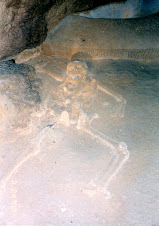The Essay (Thursday 12/1) will relate to one of the following two possibilities (yes, you do get to write an essay finally!):
A. Reform movements of the time period 1825-1850 (motivations and effects)
B. Slavery's growth and demise in the time period 1775-1830 (causes and impacts)
Use the documents below to guide your study:
1) Who was Charles G. Finney? To what reform movement of the 1800s is he referring? What is the purpose of that reform movement, according to Finney?
When the churches are . . . awakened and reformed, the reformation and salvation of sinners will follow, going through the same stages of conviction, repentance, and reformation. Their hearts will be broken down and changed. Very often the most abandoned profligates are among the subjects. Harlots, and drunkards, and infidels, and all sorts of abandoned characters, are awakened and converted.Source: Charles G. Finney, 1834
2) Based on the document, what do you think the members of the Brook Farm Association felt about changes going on in society in the early-to-mid 1800s? What would their vision of a perfect world most likely be?
In order to more effectually promote the great purposes of human culture; . . . to apply the principles of justice and love to our social organization in accordance with the laws of Divine Providence; to substitute a system of brotherly cooperation for one of selfish competition; to secure to our children . . . the benefits of the highest physical, intellectual and moral education . . . ; to institute an attractive, efficient, and productive system of industry; . . . to diminish the desire of excessive accumulation, by making the acquisition of individual property subservient to upright and disinterested uses; to guarantee to each other forever the means of physical support, and of spiritual progress; -- we the undersigned do unite in a voluntary Association . . .
Source : The Constitution of the Brook Farm Association, 1841.
3) Examine the picture below. What reform is it advocating, and for what purpose?
4) Assume that the "Mr. Jefferson" being discussed in this document is Thomas Jefferson . . . what remarks had Jefferson most likely made, about what group of people, that David Walker is addressing?
What is Mr. Walker's intended audience? What point(s) is he making?
For my own part, I am glad Mr. Jefferson has advanced his positions for your sake; for you will either have to contradict or confirm him by your own actions, and not by what our friends have said or done for us; for those things are other men’s labors, and do not satisfy the Americans, who are waiting for us to prove to them ourselves that we are MEN, before they will be willing to admit the fact; for I pledge you my sacred word of honor, that Mr. Jefferson’s remarks respecting us, have sunk deep into the hearts of millions of the whites, and never will be removed this side of eternity. – For how can they, when we are confirming him every day, by our groveling submissions and treachery?
Remember Americans, that we must and shall be free and enlightened as your are, will you wait until we shall, under God, obtain our liberty by the crushing arm of power? Will it not be dreadful for you? I speak, Americans, for your good. We must and shall be free I say, in spite of you. You may do your best to keep us in wretchedness and misery, to enrich you and your children; but God will deliver us from you. And woe, woe, will be to you if we have to obtain our freedom by fighting.
Source: David Walker, Appeal to the Colored Citizens of the World, 1829
5) What was the purpose of the Vermont Colonization Society? What is the author trying to get the reader(s) to do? Why? How does the author most likely feel about blacks and whites living together in USA society?
The Managers of the Vermont Colonization Society . . . proposed to the Inhabitants of this State, a general contribution [of] . . . one cent only, from each inhabitant of the State . . . . By promoting this contribution, you will give efficient aid to a Society, whose benevolent object is, by establishing colonies on the coast of Africa, to open a door for the gradual emancipation of the slaves in our own country, to impose an effectual barrier against the continuance of the slave trade, and ultimately to extend the blessings of civilization, and of the christian religion, throughout the vast and hitherto benighted regions of Africa.
Source: Letter to ministers from the Vermont Colonization Society, 1820.
6) Examine the maps below . . . what is the topic? How did the distribution of slavery in the USA in 1790 compare to the distribution of slavery in the USA in 1830? Why the changes?




No comments:
Post a Comment